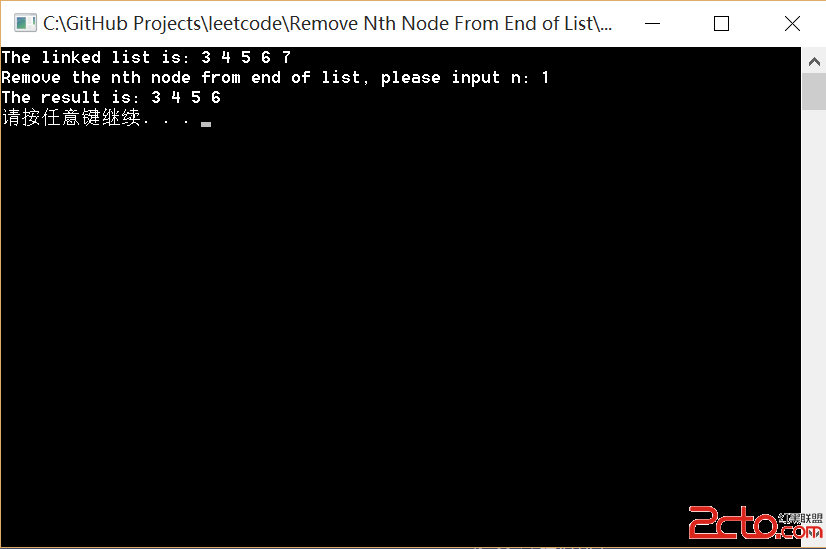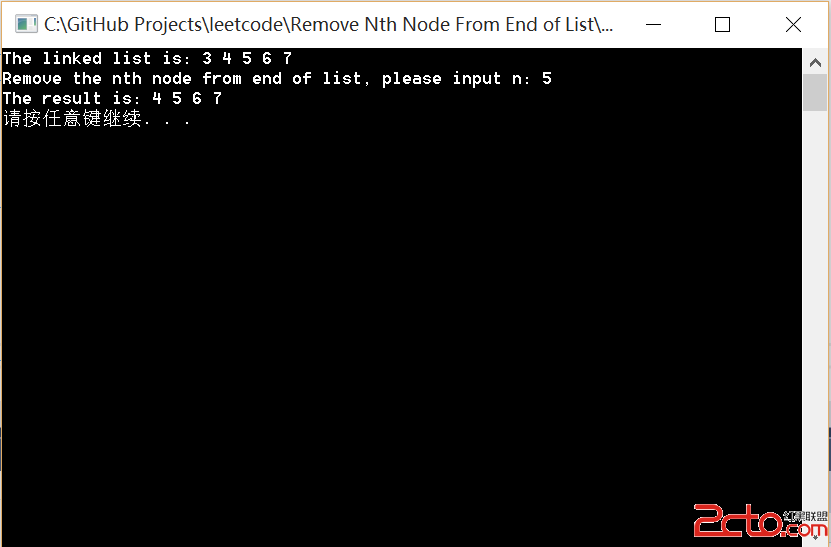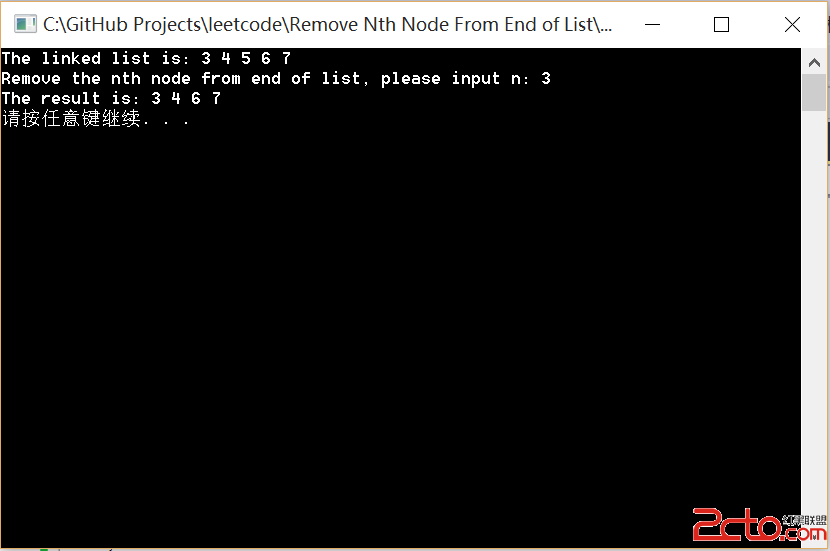一. 題目描述
Given a linked list, remove the n th node from the end of list and return its head.
For example, Given linked list: 1->2->3->4->5, and n = 2.
After removing the second node from the end, the linked list becomes 1->2->3->5.
Note:
• Given n will always be valid.
• Try to do this in one pass.
二. 題目分析
給出一個鏈表, n是指刪除倒數第n個節點。這裡的提示n的值默認是合法的。不過其實對輸入的n進行異常判斷也只需要幾句語句。
使用兩個指針,即快/慢指針的概念,其中一個指針先走n步,然後慢指針走,等到快指針走到結尾時,那麼慢指針走到了需要刪除的節點的前一個位置。
這道題主要難點是考慮邊界問題,以及特殊情況(要刪除的是頭節點),如輸入1->2->3->4, n=4,那麼需要刪除1,此時只需將頭指針head = head->next就可以了。
三. 示例代碼
#include
struct ListNode
{
int value;
ListNode* next;
ListNode(int x): value(x), next(NULL){};
};
class Solution
{
public:
ListNode *removeNthFromEnd(ListNode *head, int n)
{
if (head == NULL)
return NULL;
ListNode *fast = head;
ListNode *slow = head;
ListNode *temp = head;
for (int i = 0; i < n ; i++)
{
fast = fast->next;
if (fast)
continue;
else break;
}
while (fast)
{
fast = fast->next;
temp = slow;
slow = slow->next;
}
if (slow == head)
{
head = head->next;
return head;
}
temp->next = slow->next;
delete slow;
return head;
}
};
結果:


 編程中經常會遇到邊界問題,不小心的錯誤很容易造成程序奔潰,關於指針和鏈表的使用技巧還需要進一步的學習。
編程中經常會遇到邊界問題,不小心的錯誤很容易造成程序奔潰,關於指針和鏈表的使用技巧還需要進一步的學習。